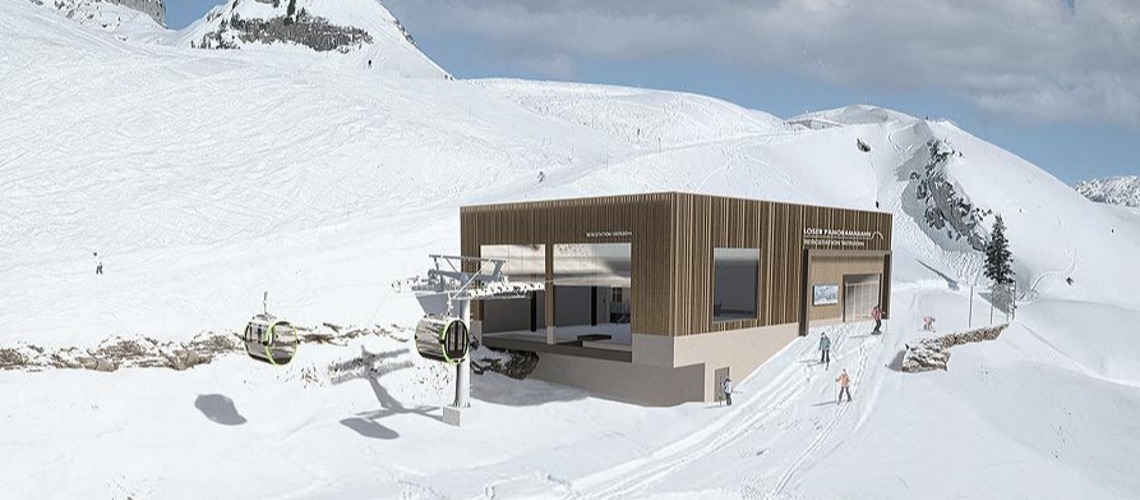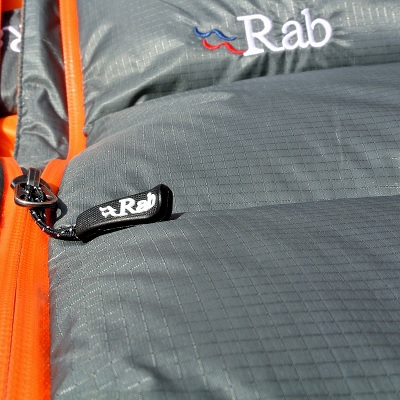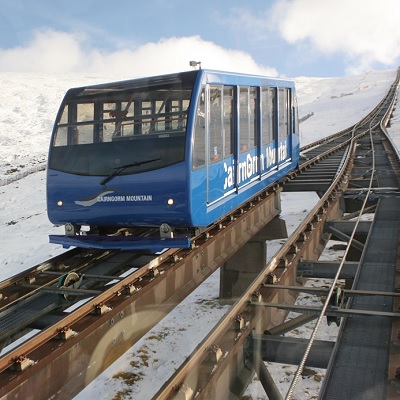New Loser Panoramabahn To Open In 2024

The Loser Panoramabahn replaces the Loser-Jet 6-seater chairlift and the Loser 2 double chairlift (whose concession has now been extended to 2027).
The new cable car links the three most important traffic points on the Loser:
Skiarena valley station – Augstalm car park (turn 11) intermediate station – Loser Alm mountain station car park.
In early winter and spring, the railway serves as a feeder for the lifts on the Loser Plateau. This is an important advantage, because it means that the naturally large amounts of snow on the Loser can be better used and snowmaking can be operated more efficiently and with less energy at lower altitudes. Skiing and tobogganing to the intermediate station can be carried out even when there is little snow.
The Ausseerland is primarily a health and recreation region. The large 10-person cabins are barrier-free and are intended to open up the possibilities for relaxation and adventure on the Loser in winter for winter hikers, tobogganists and day trippers. An important factor in the ski area is the exercise options for children. The mountain station is right at the start of the blue family descent, which is more than 7 km long. This creates the simplest and safest conditions for children and beginners to learn to ski.
In summer, the cable car serves as a flexible counterpart to the panoramic road. This should make it easier for guests visiting Ausseerland to use public transport to get up the mountain.
At least 30,000 fewer car journeys per summer season up the mountain also mean an enormous reduction in CO2, noise and tire wear. Especially in summer, the Loser Bergbahnen see the cable car as a means of public transport that allows access to the Loser. The Loser, the Loserfenster and the Augstsee are a popular destination. There are countless interest groups who experience the Loser individually across all generations (hikers, climbers, photographers, paragliders, day trippers, mountain bikers, etc.).
The Loser Bergbahnen aim to improve the existing offer as well as to make it future-proof and ecologically compatible. No new developments or extensions are planned.
The Loser is and will remain a small and fine family ski and hiking area with 100% local jobs.
We stand for better instead of more, the powerful nature of the loser needs no staging.
Data cable car
Cable car manufacturer Bartholet Maschinenbau AG
Architect KREINERarchitektur ZTGmbH
Construction companies Stations Fa. Haider & Co
Route from Kieninger
Stations Valley 859 m – Between 1402 - Mountain 1610 m
Flow rate 1,800 p/h (Loser Jet old 1,951 p/h)
Altitude difference 751 m
Cabins 76 10-person cabins
The station for the cabins will be built in the intermediate station
Equipment Upholstered individual seats, panoramic glazing
Speed max. 6 m/s
Length 3,497.6 m - first section approx. 2100 m, 2nd section approx. 1400 m in length
Travel time 13 minutes drive-through operation in the intermediate station
supports 22
Investment €30 million
Endurance until 2084
Since the end of June 2023, all legally valid permits (nature conservation, cable car building permits, clearing and water rights) have been in place.
In addition to the project team, there is ecological and geological construction supervision for the construction phase.
Construction work 2023
The intermediate station will be erected from August 2023, in October the drive and guying units of the cable car technology will be installed and then the roof will be closed. The majority of the support foundations are erected and the cable culverts are dug and humus-covered and greened again
Construction works 2024
- Dismantling Loserjet after Easter 2024
- Dismantling of the old support foundations and mountain station foundations
- Demolition of the valley station except for the transformer and low-voltage rooms
- Construction of the valley station and supports in front of the valley station
- Construction of the mountain station and support in front of the mountain station
- Installation of the cable car technology in the mountain and valley station
- Completion of construction by electrical, building services, locksmiths, carpenters, painters, floorers, tilers, furnishings, etc.
- support assembly
- cable pull
- Trial operation and acceptance by the cable car authority
- Dismantling and dismantling of the Loser II double chair lift
- Planned start of operations in late summer 2024 (end of August/beginning of September)
- During summer operation, the Loser Panorama-Strasse will be closed to guests during operating hours. There will be various favorable offers for family and combi - cable car and road. Outside the cable car operating times, the Loser Panoramastraße is open in the usual way.
Loser Panoramabahn 2024
Alpine mobility for the next generation - a vision becomes reality
Valley station 859 m
In addition to the cable car technology, the valley station also includes new ticket offices. A new public toilet facility, medical room, storage, crew and technical room as well as the operating rooms are housed there. In addition, a small hydroelectric power plant is planned, which will use the extensive network of pipes outside of snowmaking times.
Intermediate station 1,402 m
In addition to the ropeway technology, this also includes the station building for storing the 76 cabins. The entire facade area is used for a photovoltaic system. A snow groomer workshop and a storage area for snow cannons and spare parts are being built underneath the building. In summer, the middle station is the perfect starting point for via ferratas, mountain bike tours and hikes around the Loser.
Mountain station 1,610 m
- The mountain station is behind the Loser Alm mountain restaurant. Starting from there, the tow lifts and the Loserfenster quad chairlift and the valley runs can be reached directly in winter.
- In summer, this place is still the perfect starting point for hikes, walks, via ferratas and nature experiences. The mountain station is also equipped with a photovoltaic system due to its favorable orientation.
- The sum of all PV systems and hydroelectric power should make it possible for around 50% of the year-round energy requirement to be self-produced
More Here














